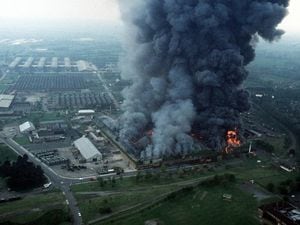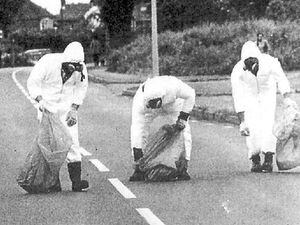288 dead from asbestos cancer in Shropshire
Asbestos-related cancer has claimed 288 lives in Shropshire since the 1980s, new figures have revealed.

Charity Mesothelioma UK has warned that the danger posed by asbestos is often underestimated, and called for action to rid buildings of the deadly substance.
Since 1981, when records began on deaths related to the disease, 190 people have died in the Shropshire Council area, and 98 in Telford & Wrekin.
The figures show the recent impact of the disease, which can often be delayed in its appearence and a result of exposure many decades before.
Between 2013 and 2017, 16 men and seven women died of the disease in Telford & Wrekin, while 48 died in Shropshire.
In Powys Asbestos-related cancer deaths are also at their highest level since records began, with 27 between 2013 and 2017.
Inhaling asbestos fibres can lead to mesothelioma, a lethal cancer affecting the lining of the lungs, which can take decades to develop.
Fire claiming lives years on

A number of Telford residents developed asbestos-related disease as a result of a huge fire at the Telford army depot COD Donnington in 1983.
The blaze scattered ash containing asbestos for 15 square miles around the town.
It was three days before the council began its clean-up operation, by which time many residents had already done so themselves.
In May this year a coroner ruled that a groundsman who helped in the clean-up had died as a result of asbestos exposure.
Earlier this year the trust that runs Shropshire’s two main hospitals was ordered to pay £34,000 after refurbishment work in 2012 exposed employees and contractors to asbestos.
The issue of suspected asbestos had been reported by a worker at the trust, who was sacked and later won an unfair dismissal claim.
Nationwide, deaths caused by the cancer have almost quadrupled over 35 years, reaching nearly 13,000 at the latest count.
The UK has the highest incidence of mesothelioma in the world, due to the regular use of asbestos to construct buildings between 1940 and 1970.
The material was banned in 1999, but damage to older buildings can release fibres into the air.
'There is no safe level of asbestos exposure'
Liz Darlison, from Mesothelioma UK, said: "There is no safe level of asbestos exposure, and we should be doing much more to protect people, particularly children.
"The time from exposure to developing the disease can take several decades, which is why the level of concern is perhaps not fully appreciated.
"As a nation, we must take responsibility and rid our buildings of this cancer-causing substance, for the sake of our children, their children, and every generation in the future."
Kate Sweeney, personal injury lawyer at law firm Stephensons, said that many people consider asbestos "a problem of the past".
"This is simply not the case," she said.
"Asbestos-related illnesses do not only occur in tradespeople or people who have worked in the construction industry.
"This potentially deadly material has been used in all types of buildings, and is still present in many primary schools."
The Health and Safety Executive said that it expects mortality rates from mesothelioma to decline after 2020.
A spokesperson said: "Since the dangers of asbestos became clear, successive governments have, over many years, made a concerted and sustained effort to address the issue."





